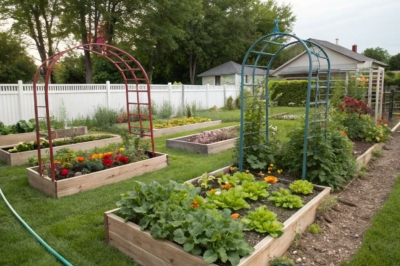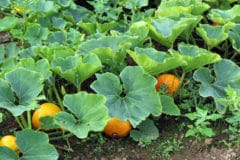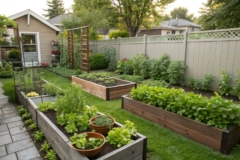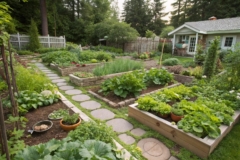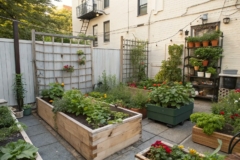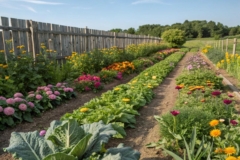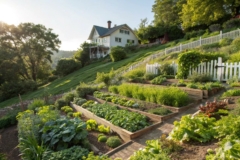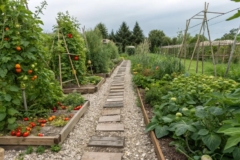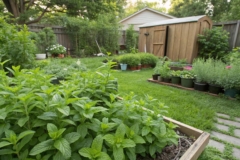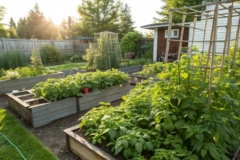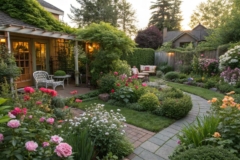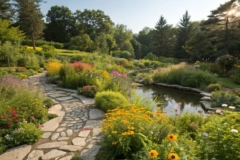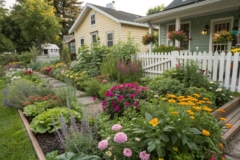1. Raised Bed Magic
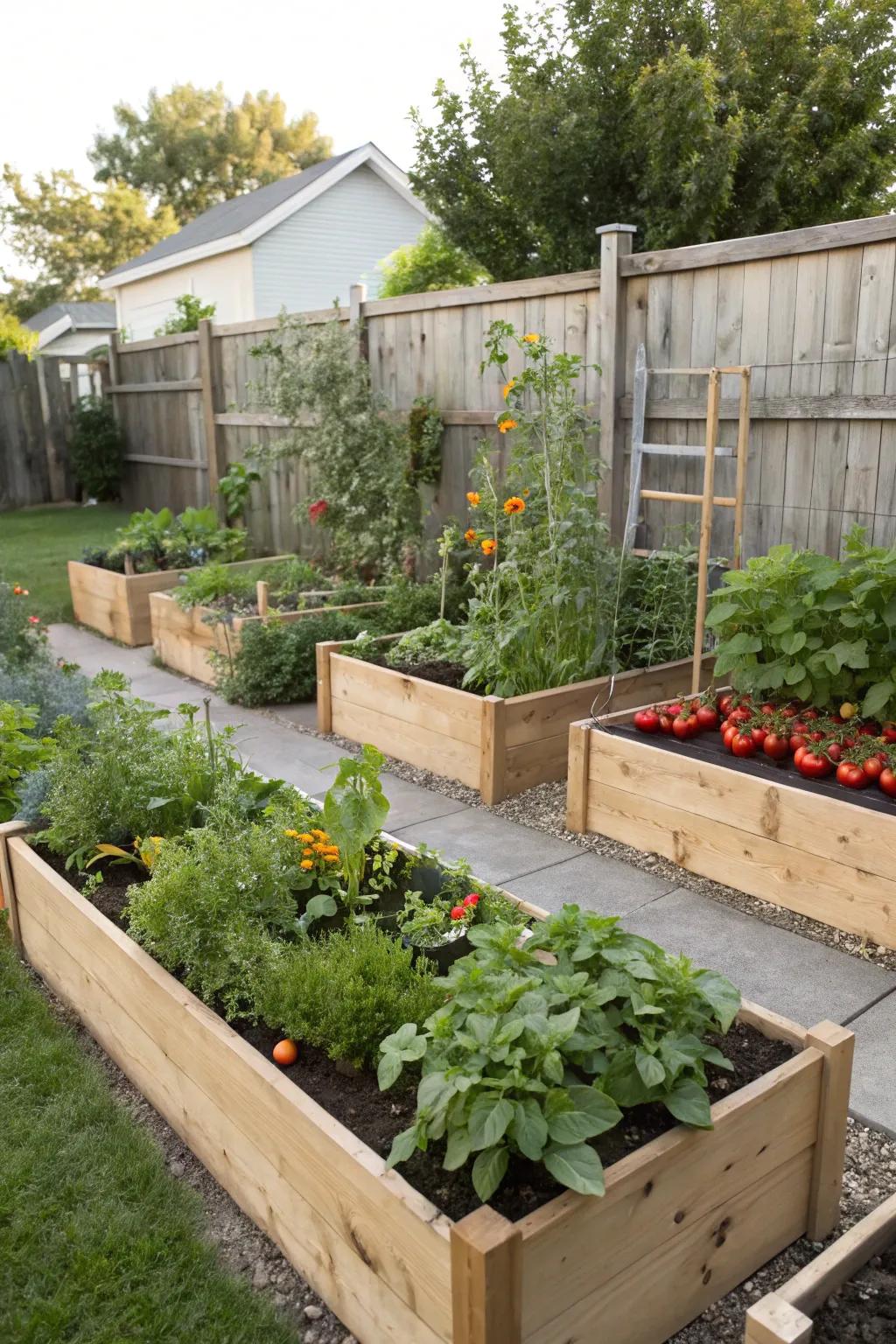
Raised beds are a game-changer for improving soil quality and drainage. In my Austin garden, I love using reclaimed wood to create these beds, making them both sustainable and charming.
You might like:
- Reclaimed Wood Raised Garden Bed Kit: Build charming, sustainable raised beds with this easy-to-use reclaimed wood garden bed kit.
- Garden Soil for Vegetables and Herbs: Enhance your soil quality with nutrient-rich garden soil perfect for vegetables and herbs.
- Raised Bed Drainage Mat: Improve drainage in your raised beds effortlessly with this effective drainage mat solution.
2. Pathway Perfection

Design gravel or stepping stone pathways between your vegetable plots for easy access and a tidy look. In my garden, these pathways also serve as a great spot for a morning stroll.
Give these a look:
- Garden Stepping Stones: Enhance your garden’s charm with durable stepping stones, offering easy access and visual appeal.
- Gravel for Garden Pathway: Create a neat, low-maintenance garden pathway with quality gravel for an elegant finish.
- Garden Pathway Edging: Keep your pathways tidy with sturdy edging, ensuring a clean and defined garden layout.
3. Stepping Stone Paths
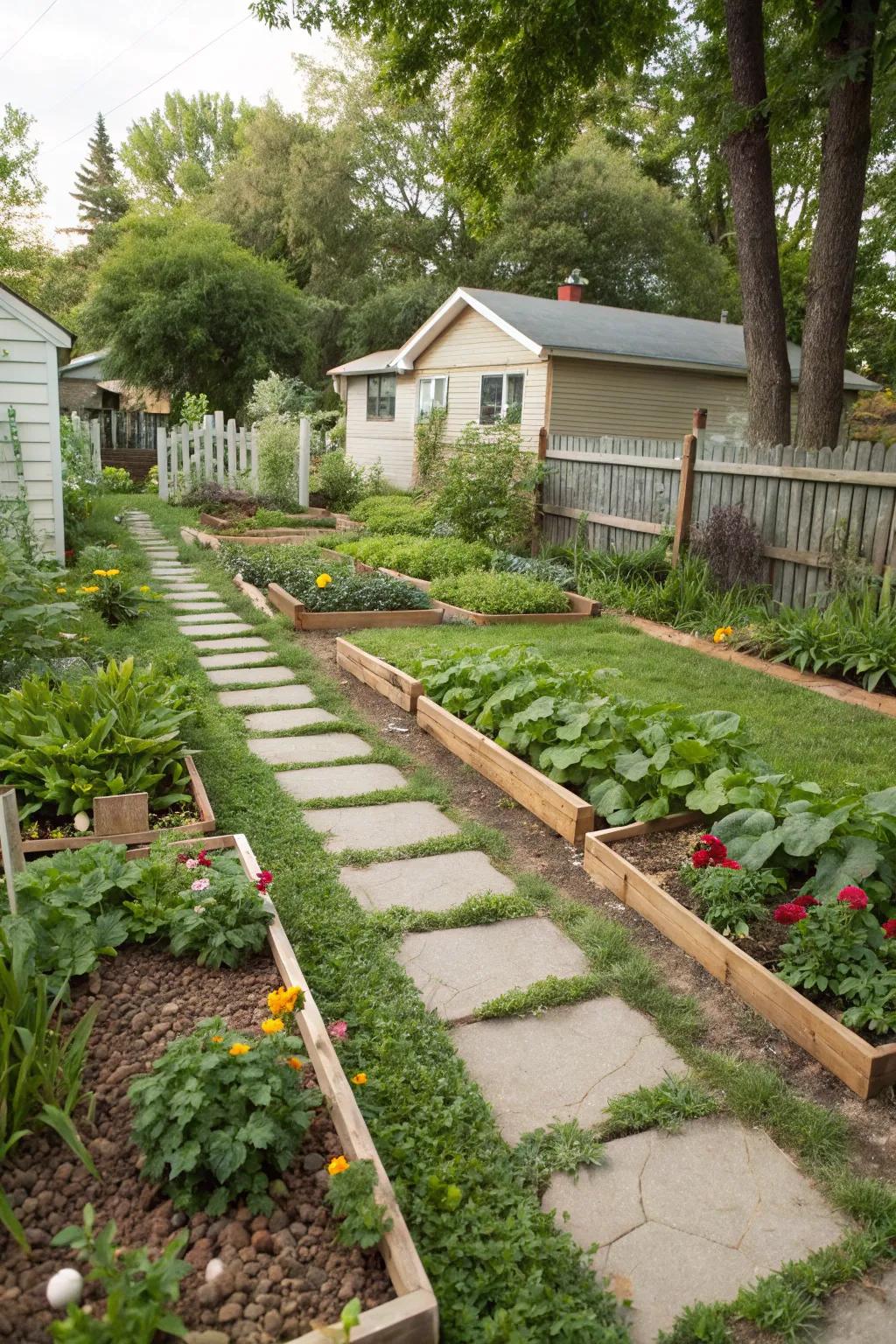
Lay down stepping stones to easily navigate through your garden beds. In my garden, these stones prevent soil compaction and keep my shoes clean!
Possibly helpful picks:
- Garden Stepping Stones: Enhance your garden’s accessibility with durable stepping stones, keeping paths neat and clean.
- Interlocking Paver Walkway Kit: Create easy-to-install pathways that blend beautifully with your garden design and reduce soil compaction.
- Landscape Edging Panels: Define your garden paths with stylish edging panels, maintaining tidy and orderly walkways.
4. Seasonal Rotation
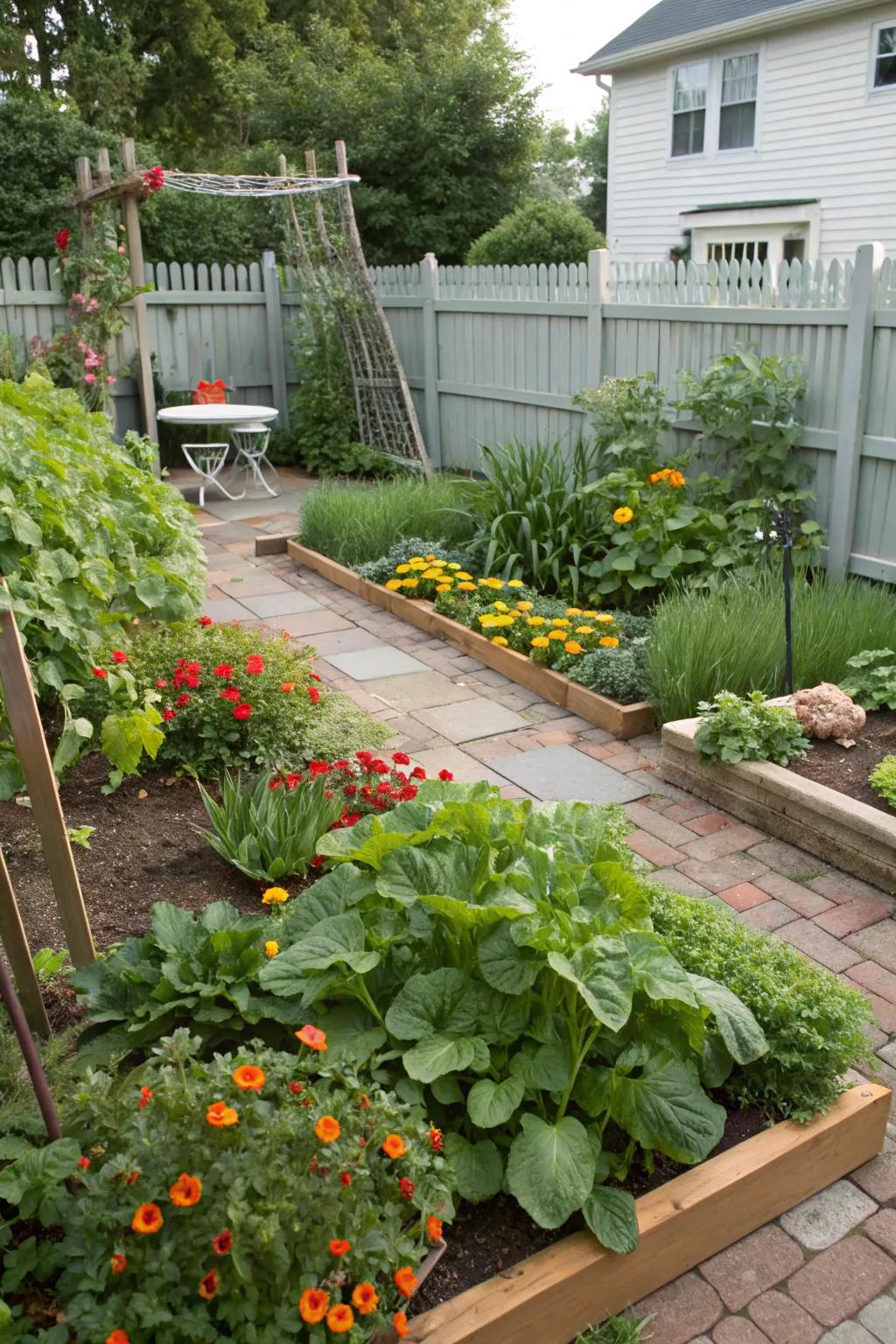
Rotate your crops seasonally to maximize yield. In my experience, switching out spring and summer crops keeps the garden productive and healthy.
Possibly handy products:
- Raised Garden Bed Kit: Elevate your crop rotation with a raised bed, boosting soil health and plant growth.
- Vegetable Planting Guide: Optimize your seasonal planting with this comprehensive crop rotation guide for high yields.
- Garden Soil Tester Kit: Ensure optimal soil conditions for rotating crops with this easy-to-use soil tester kit.
5. DIY Cold Frames
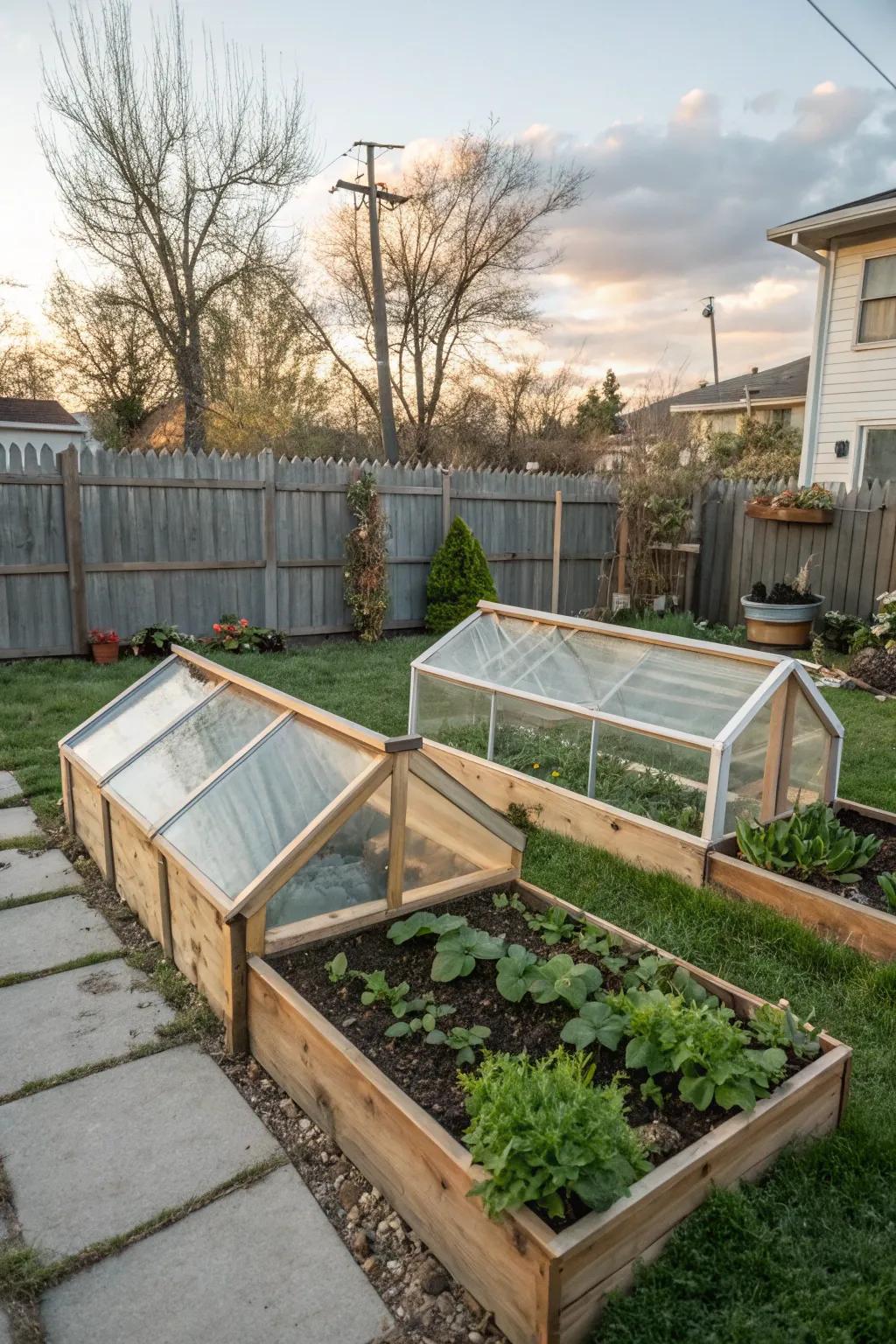
Extend your growing season with DIY cold frames. In the cooler months, these frames protect my tender greens from unexpected frosts.
You might give these a try:
- Clear Polycarbonate Sheets: Optimize light exposure for your plants with durable polycarbonate sheets, ideal for cold frames.
- Wooden Garden Bed Kits: Build sturdy cold frames with versatile wooden garden bed kits, perfect for any backyard.
- Adjustable Vent Hinges: Enhance ventilation in your cold frames using adjustable vent hinges for optimal airflow.
6. Companion Planting
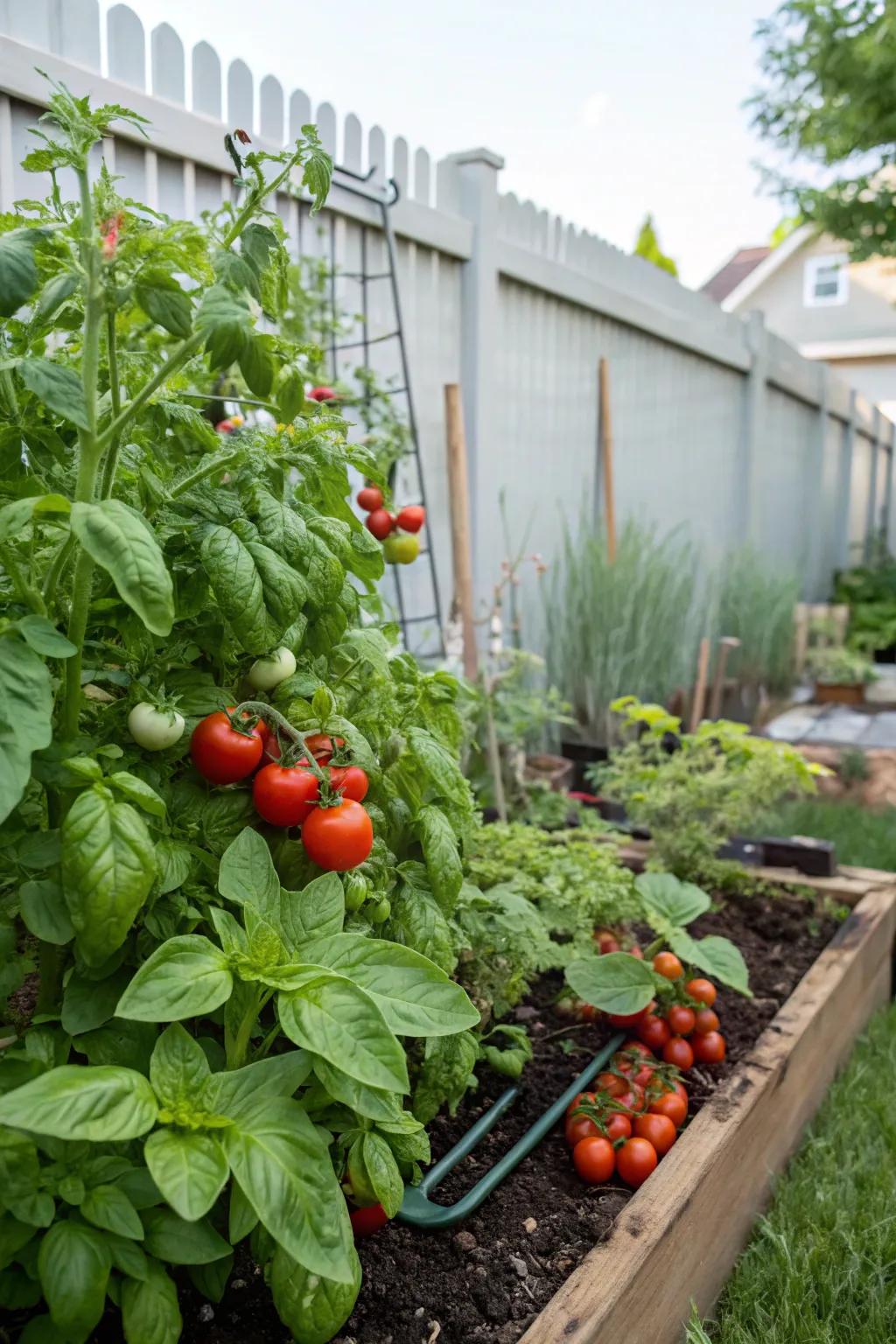
Plant companions like tomatoes and basil together for better growth and flavor. This pairing not only enhances taste but also helps deter pests naturally.
Check if these fit your needs:
- Tomato and Basil Seed Pack: Grow delicious tomatoes and basil together with this easy-to-use seed pack today.
- Raised Garden Bed Kit: Maximize your gardening space and growth with this versatile raised garden bed kit.
- Garden Trellis for Climbing Plants: Support your tomato plants with a sturdy trellis, enhancing growth and visual appeal.
7. Mix and Match Veggies
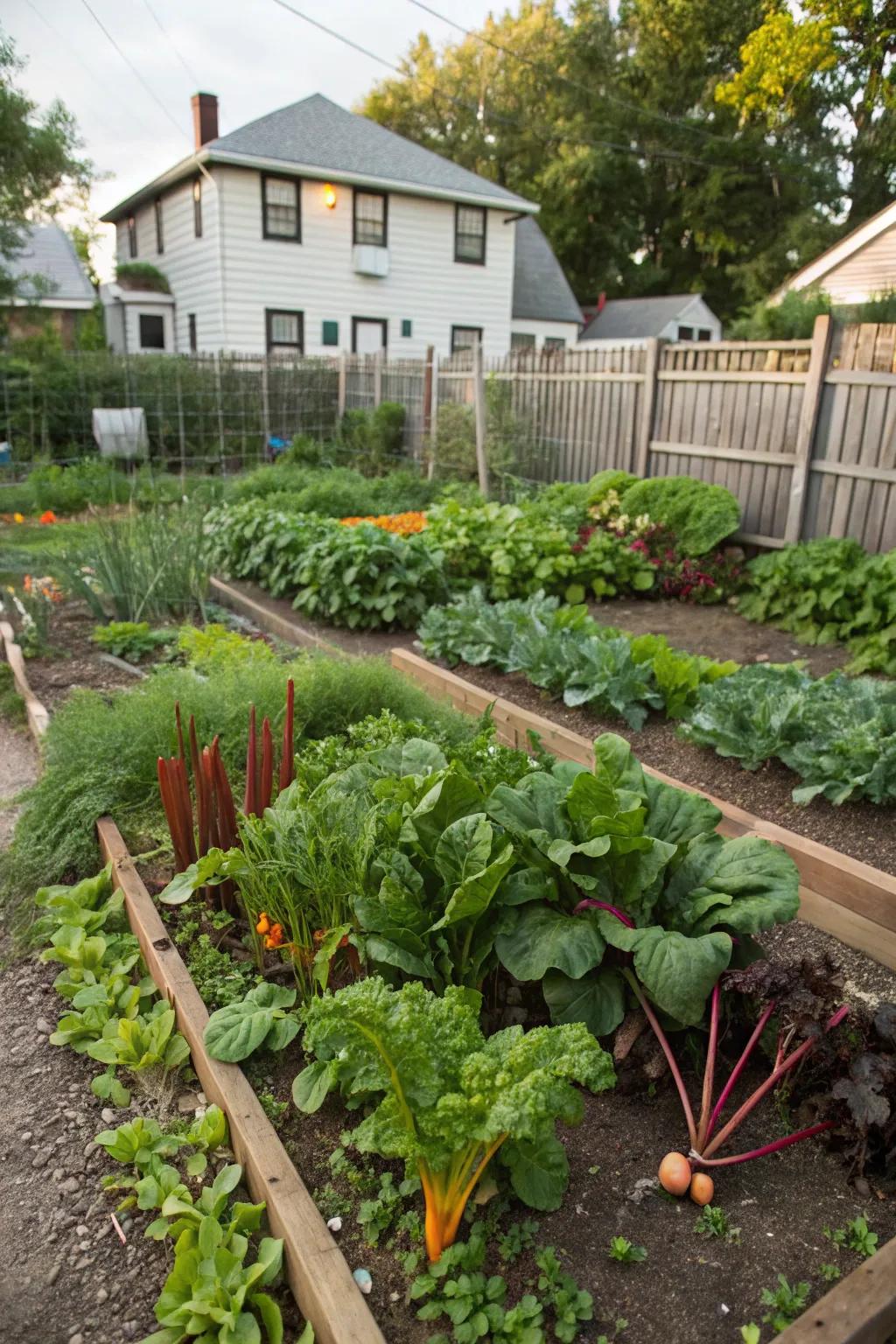
Combine different types of vegetables and herbs for a diverse garden that keeps things interesting. I enjoy mixing leafy greens with root vegetables for a varied harvest.
Maybe worth checking out:
- Vegetable and Herb Seed Variety Pack: Discover diverse harvests with a seed variety pack perfect for mixing greens and roots.
- Raised Garden Bed Kit: Cultivate your garden easily with a raised bed kit, ideal for organized veggie planting.
- Organic Vegetable Fertilizer: Boost your garden’s growth using organic fertilizer crafted for vegetables and herbs.
8. Upcycled Planters
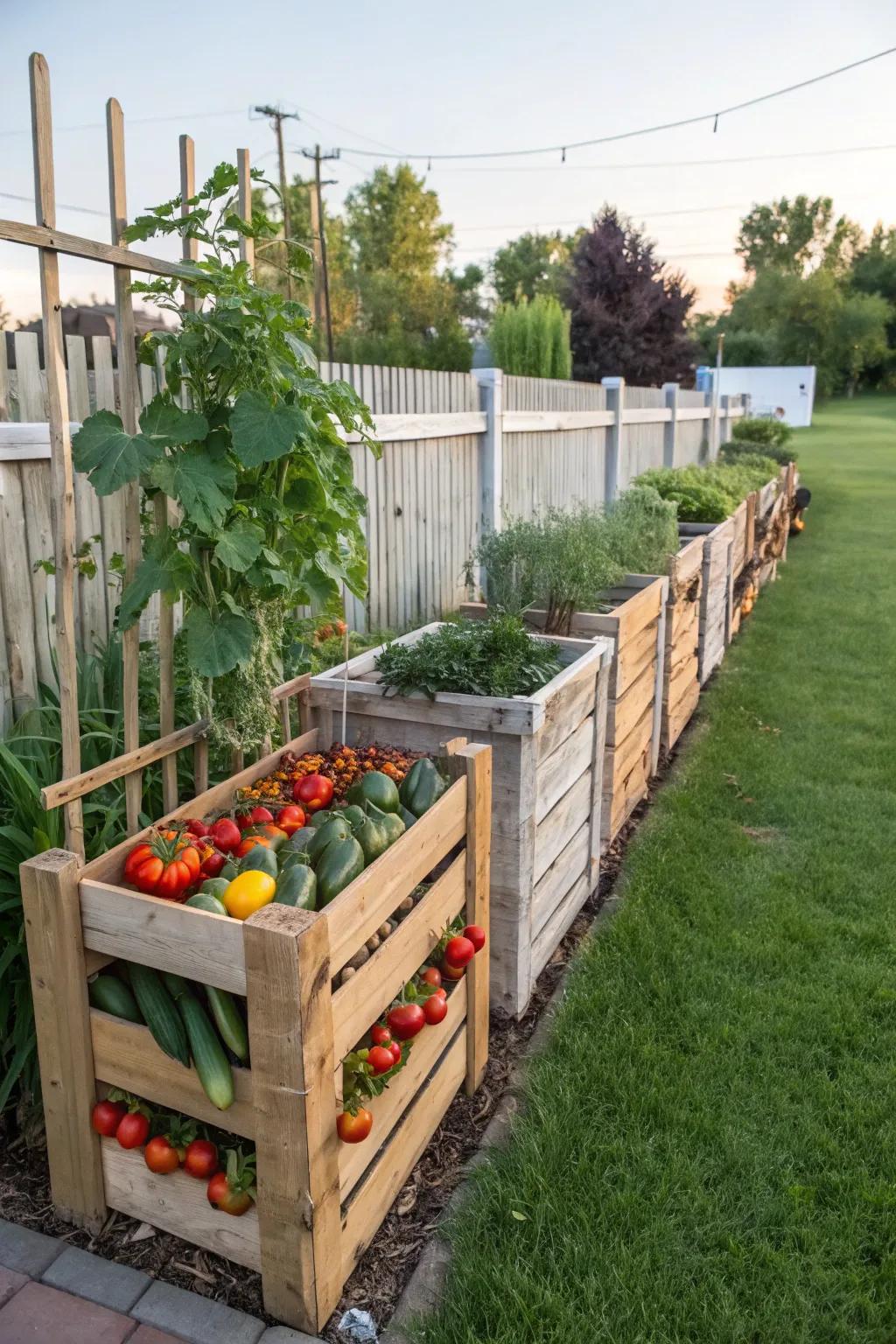
Create unique planters using upcycled materials like tires or pallets. I’ve used old pallets to build rustic planters that complement my garden’s natural vibe.
Some handy options:
- Wooden Pallet Planter Kit: Transform old pallets into rustic planters; perfect for adding charm to your garden space.
- Garden Paint for Outdoor Wood: Revitalize your upcycled planters with premium, weather-resistant garden paint for lasting beauty.
- Planter Liners for DIY Projects: Line your upcycled planters with durable liners to ensure healthy plant growth and easier maintenance.
9. Vertical Gardening
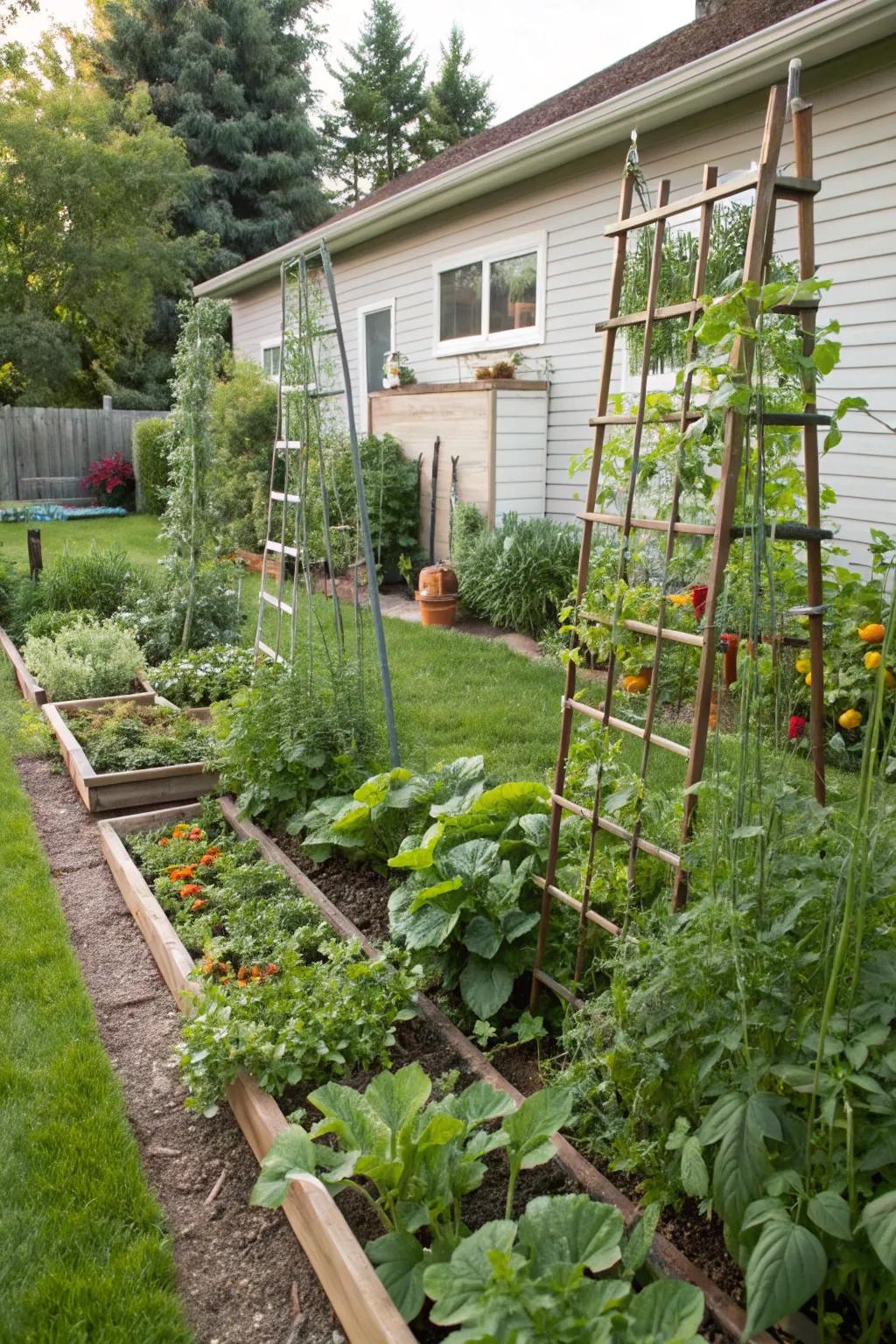
Use vertical space to your advantage by growing climbers like peas and beans on trellises. Trust me, this not only saves space but adds a stunning visual element to your garden.
Check these products out:
- Garden Trellis for Vegetables: Maximize garden space and support climbing plants with a sturdy trellis. Enhance your garden’s beauty!
- Climbing Plant Support Clips: Secure your climbers effectively with these handy plant clips. Simplify your vertical gardening journey!
- Raised Garden Bed Kits: Optimize space with raised beds that elevate your gardening game. Perfect for vertical additions!
10. Insect Hotels
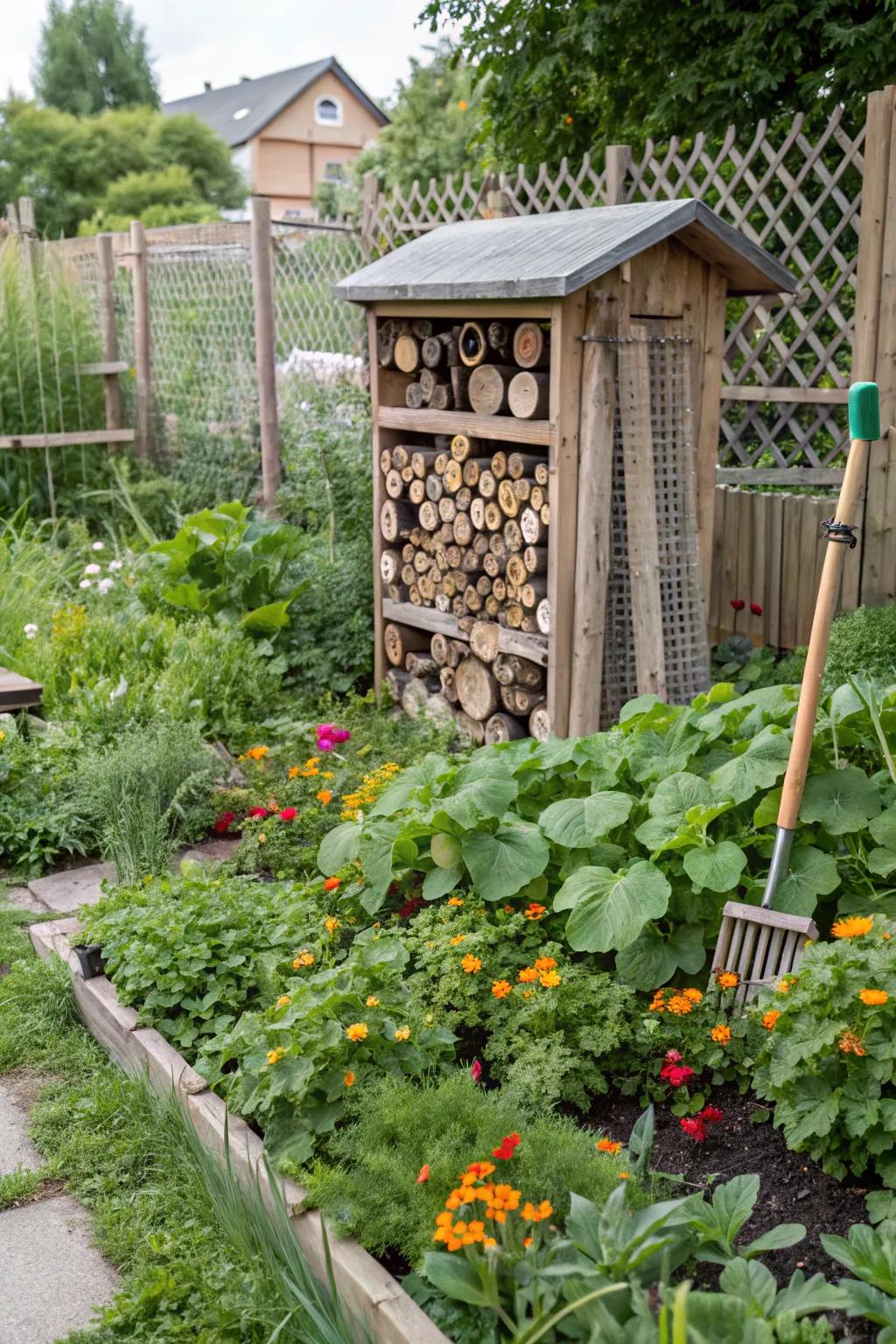
Introduce insect hotels to encourage beneficial insects to your garden. Since adding mine, I’ve noticed a wonderful increase in pollinators and natural pest control.
Items that may come in handy:
- Wooden Insect Hotel Kit: Invite beneficial insects to your garden with a natural wooden insect hotel. Boost pollination today.
- Bee House for Garden: Enhance pollination efforts by attracting solitary bees with this charming bee house.
- DIY Bug Hotel Supplies: Create a cozy bug haven with this DIY kit designed for garden biodiversity.
11. Water Feature Focus

Install a small water feature to create a tranquil garden atmosphere. I added a simple birdbath, and it’s become a delightful spot for local wildlife.
These products might help:
- Decorative Bird Bath: Add charm and allure to your garden by inviting birds to enjoy this stunning birdbath.
- Solar-Powered Fountain Pump: Enhance your birdbath with a solar-powered fountain for an eco-friendly and soothing water feature.
- Garden Water Feature Lights: Illuminate your water feature for a magical, serene atmosphere during evening hours.
12. Edible Landscaping
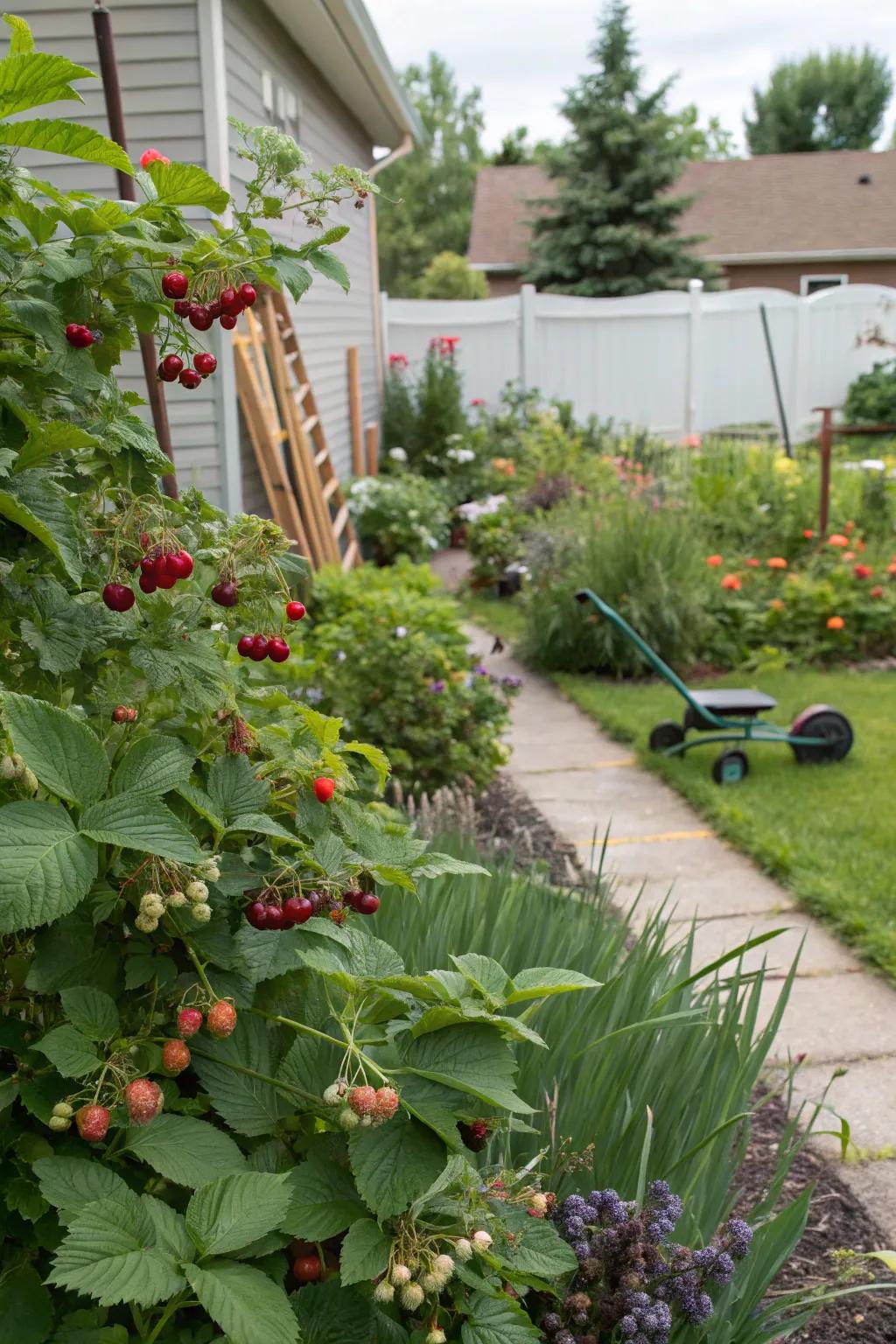
Integrate edible plants into your existing landscape for a seamless look. I’ve blended berry bushes with flowering perennials for a garden that’s both functional and beautiful.
These products might be useful:
- Berry Bush Starter Plants: Transform your garden with starter berry bushes that offer both beauty and delicious fruit.
- Perennial Flower Seeds: Enhance your landscape with perennial flowers for a vibrant, year-round garden display.
- Garden Trellis for Climbing Plants: Support and showcase your climbing vegetables and berries with a sturdy garden trellis.
13. Natural Borders
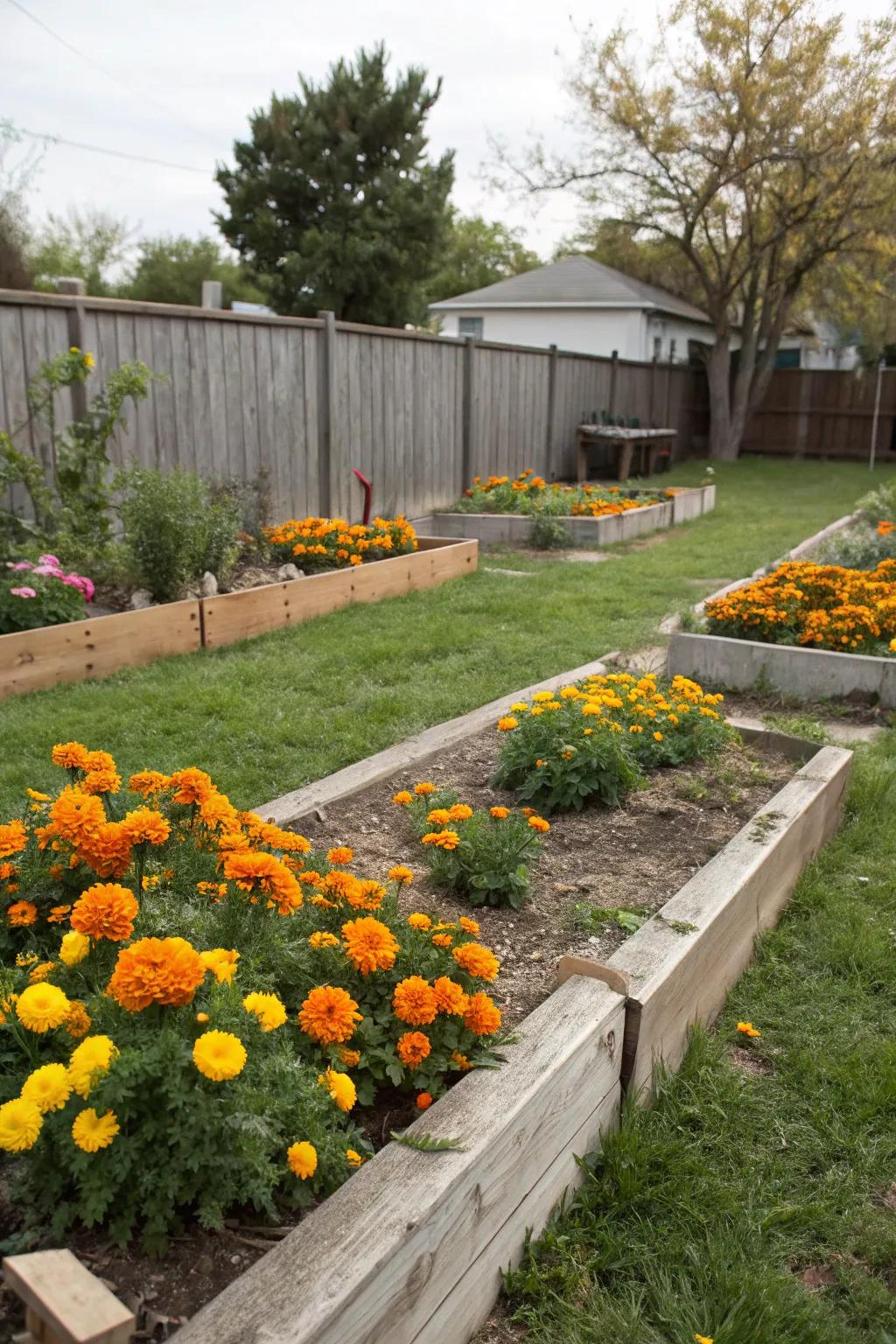
Use natural borders like marigolds to frame your garden beds. In my garden, these bright blooms attract pollinators and add a splash of color.
Products that could assist:
- Marigold Seeds Pack: Plant vibrant marigolds to enhance your garden’s beauty and attract helpful pollinators effortlessly.
- Organic Fertilizer for Flowers: Boost your marigold blooms with organic fertilizer, ensuring healthy growth and vivid colors.
- Raised Garden Bed Kit: Create perfect raised garden beds to display your marigolds beautifully and organize your space.
14. Sensory Garden
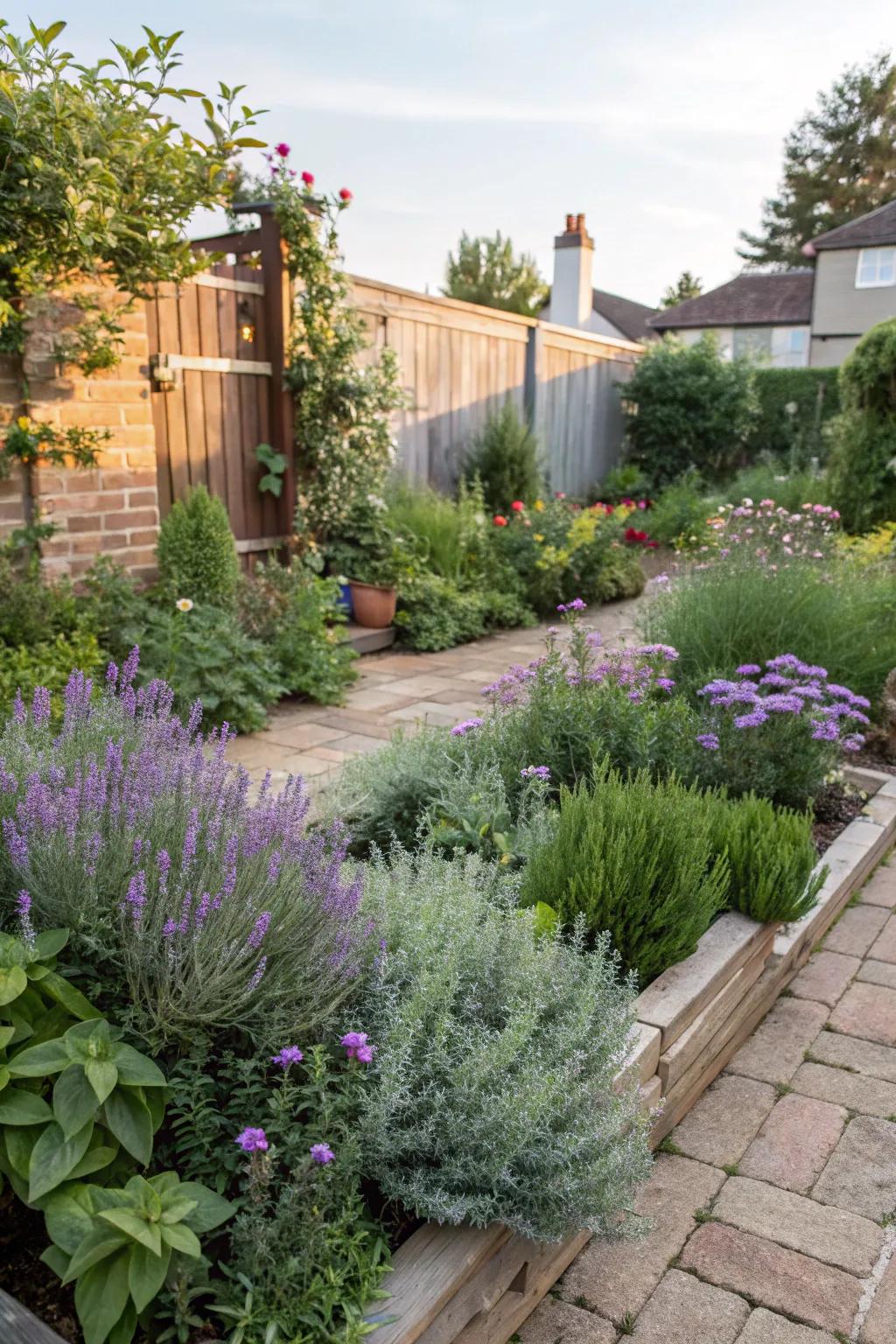
Incorporate a variety of plants to engage all your senses, from fragrant herbs to textured leaves. My sensory garden is a favorite spot for relaxation and inspiration.
A few relevant products:
- Aromatic Herb Garden Kit: Cultivate aromatic herbs for a fragrant garden experience. Perfect for enhancing your sensory journey.
- Textured Plant Identification Markers: Enhance your garden with stylish markers. Easily identify plants by touch and sight.
- Outdoor Water Feature Fountain: Add a soothing water feature to your garden. Promote relaxation with calming water sounds.
15. Fruit Tree Espaliers
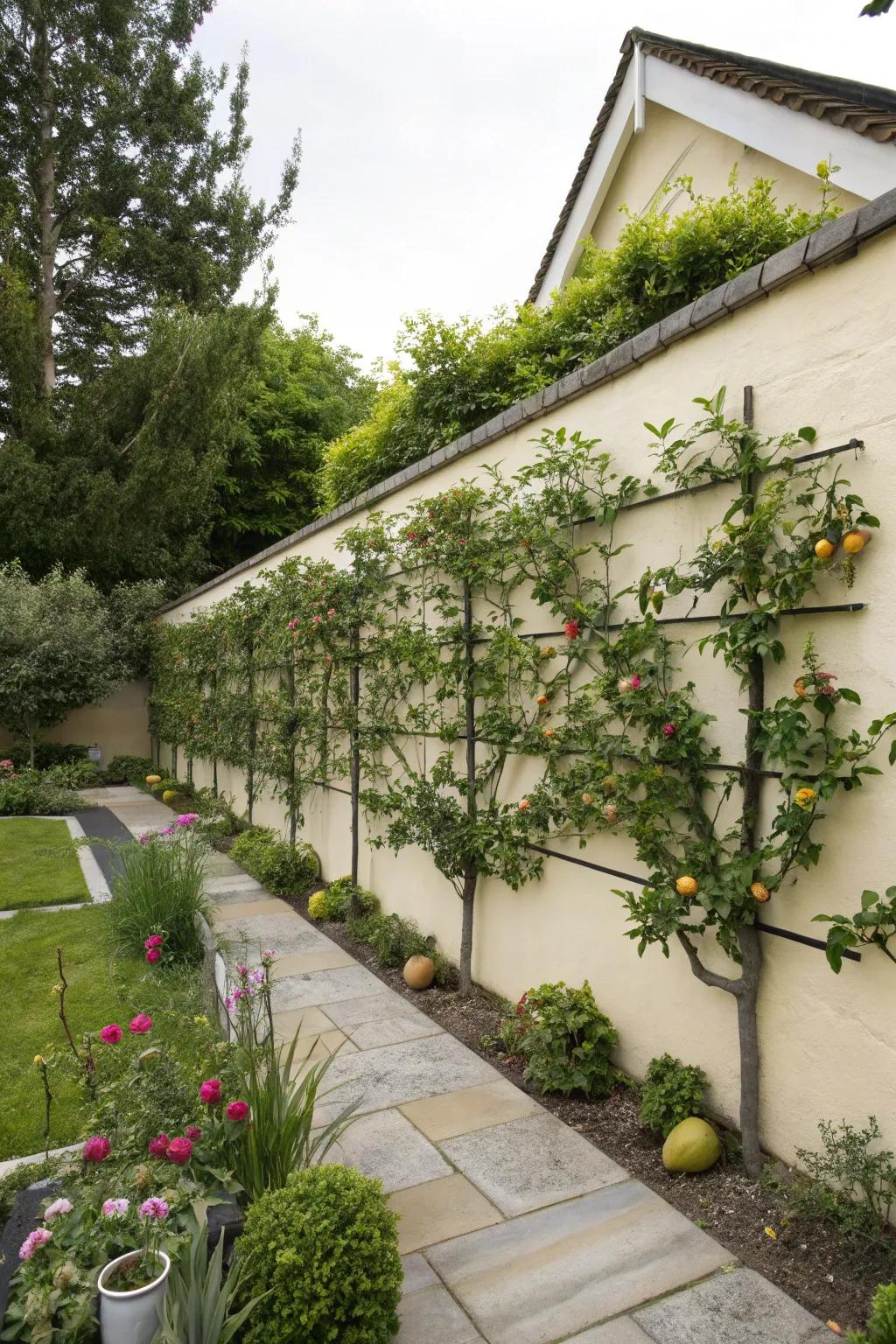
Train fruit trees against a wall or fence to save space and create visual interest. My apple and pear espaliers are always a conversation starter.
A few choices to try:
- Wall-Mounted Espalier Trellis: Easily train your fruit trees with this sturdy wall-mounted espalier trellis. Enhance your garden’s look.
- Adjustable Tree Ties: Secure your trees effectively with durable, adjustable ties. Perfect for all garden setups.
- Pruning Shears: Maintain tree shapes with precision using high-quality pruning shears. Essential for healthy growth.
16. Mini Greenhouse

Build a small greenhouse to nurture seedlings and delicate plants. I made mine from old windows, and it adds a quaint touch to the garden.
A few suggestions:
- Old Window Panels: Create a charming greenhouse using rustic window panels. Perfect for DIY enthusiasts!
- Greenhouse Shelving Units: Maximize your space with adjustable shelving units for all your plants and pots.
- Weatherproof Wood Primer: Protect your wooden greenhouse frames with weatherproof primer for extended durability.
17. Container Creativity

Get creative with your planters by repurposing items like wooden crates or wheelbarrows. I’ve turned an old wheelbarrow into a mobile herb garden, and it’s the talk of my neighborhood!
May just do the trick:
- Wooden Crates for Gardening: Transform wooden crates into charming planters for your vegetable garden. Add rustic appeal today!
- Metal Plant Labels: Label your herbs and plants with stylish metal tags. Stay organized and inspired!
- Portable Mini Greenhouse: Extend your growing season with a portable mini greenhouse. Protect your plants easily!
18. Arches and Trellises
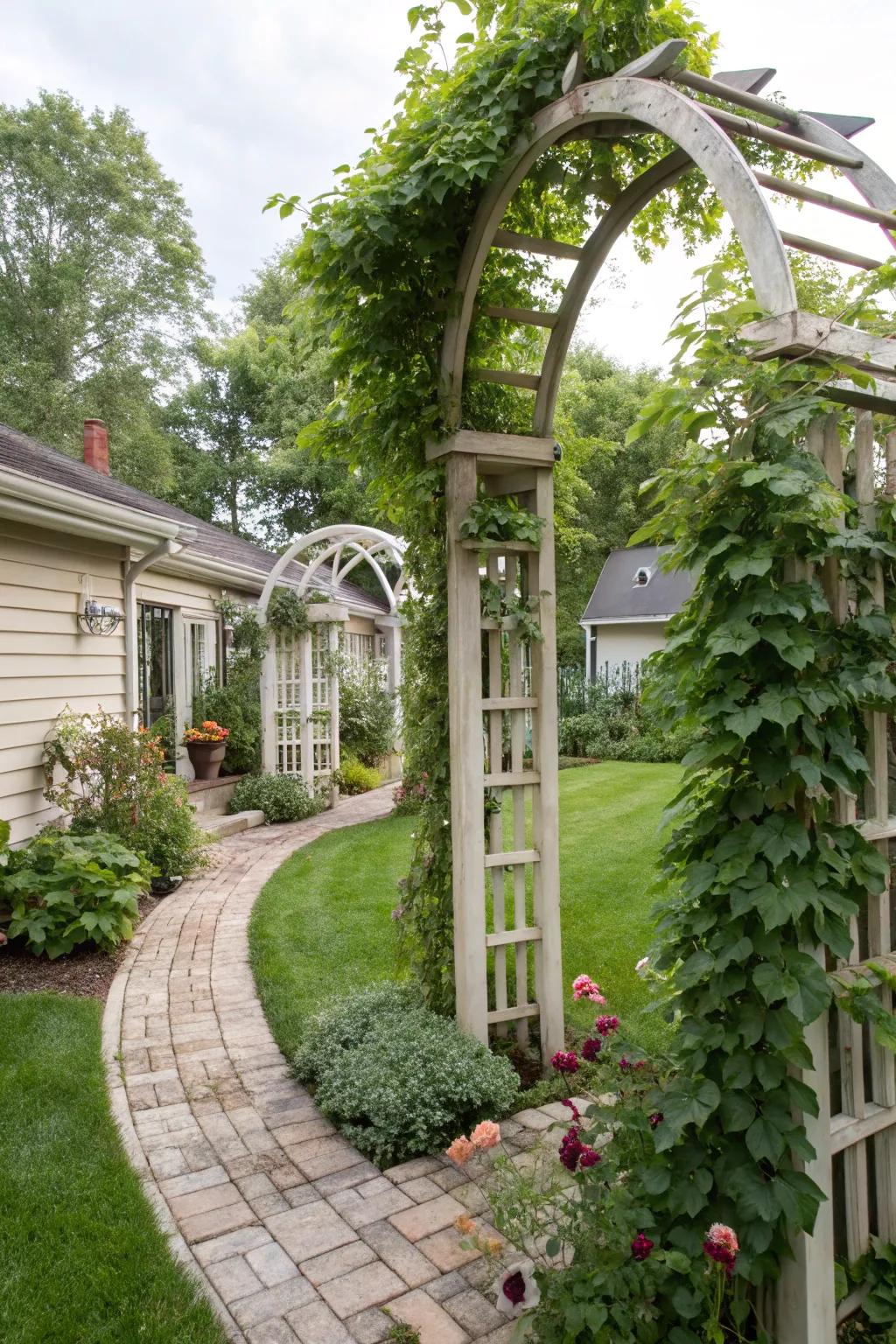
Add decorative arches and trellises for both support and style. I’ve found that they provide the perfect framework for climbing flowers and vegetables, creating a mini garden wonderland.
Useful items to consider:
- Wooden Garden Arch: Enhance your garden’s charm with a wooden arch, perfect for climbing plants and style.
- Metal Garden Trellis: Add elegance and support with a durable metal trellis, ideal for climbing vegetables.
- Vinyl Arbor with Lattice Panels: Create a stunning entrance with a vinyl arbor, supporting lush climbing greenery beautifully.
19. Living Fences
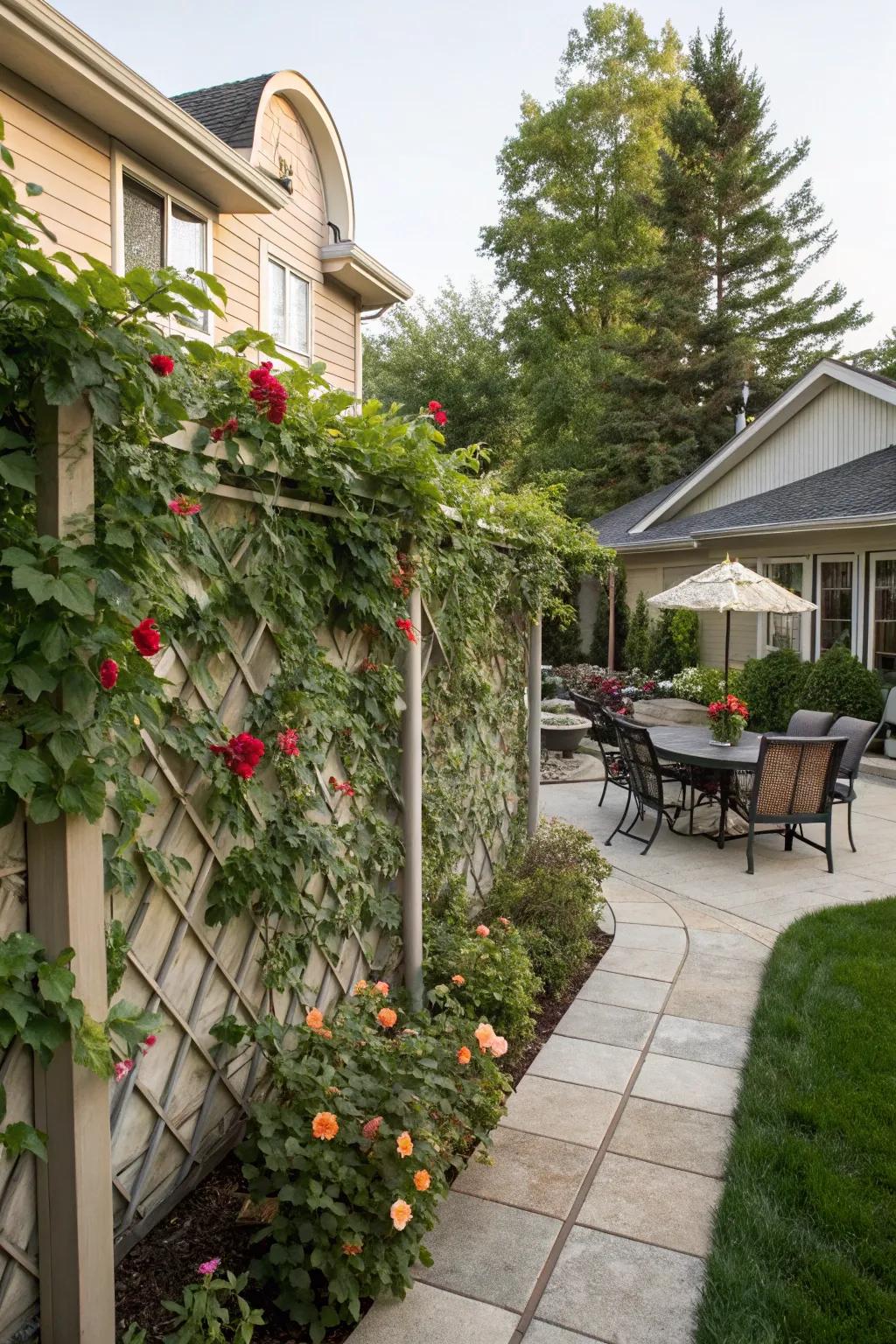
Use climbing plants on trellises to create living fences that define your garden space. In my experience, these fences are both beautiful and functional for privacy.
A few things you might like:
- Garden Trellis Panels: Create stunning climbing plant displays with these versatile garden trellis panels. Perfect for privacy.
- Climbing Plant Support Clips: Ensure your climbing plants thrive with easy-to-use support clips. Enhance your garden’s beauty today.
- Outdoor Planters for Climbing Plants: Upgrade your garden with these stylish planters, ideal for housing your climbing plants.
